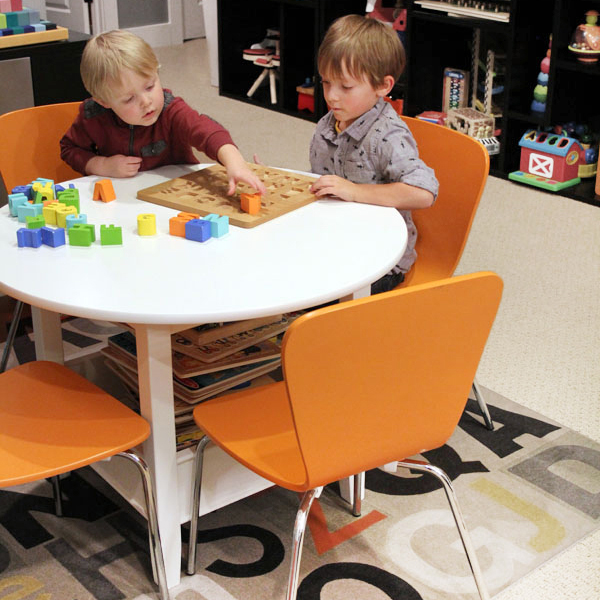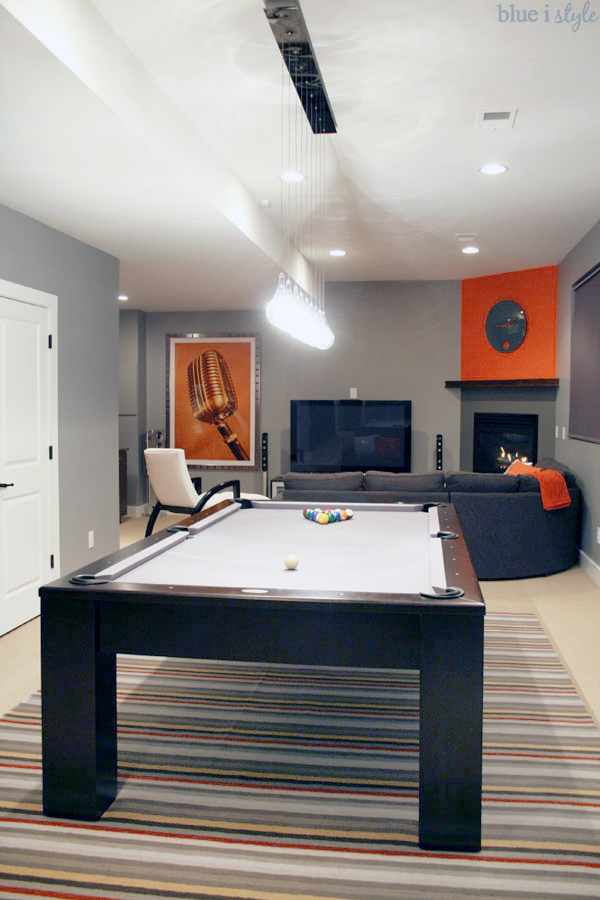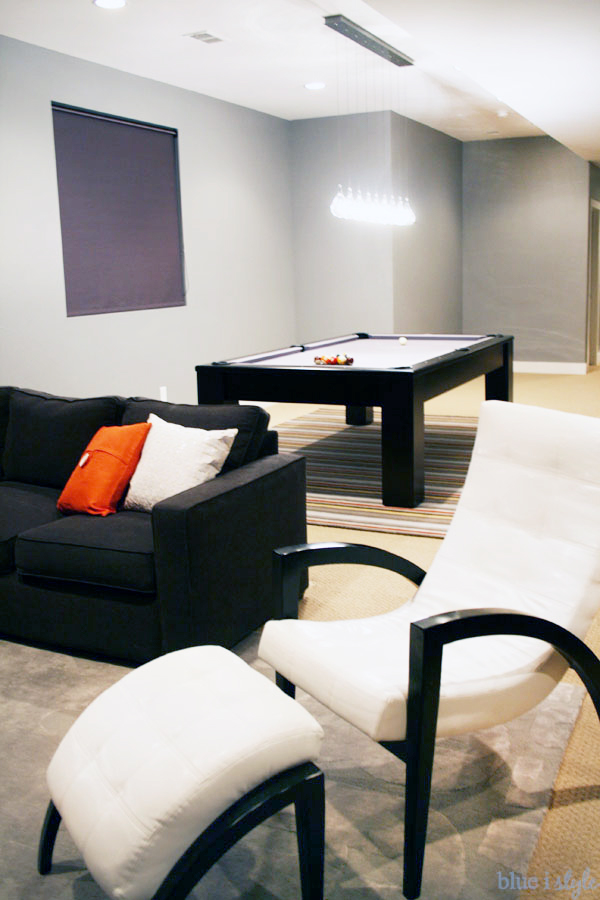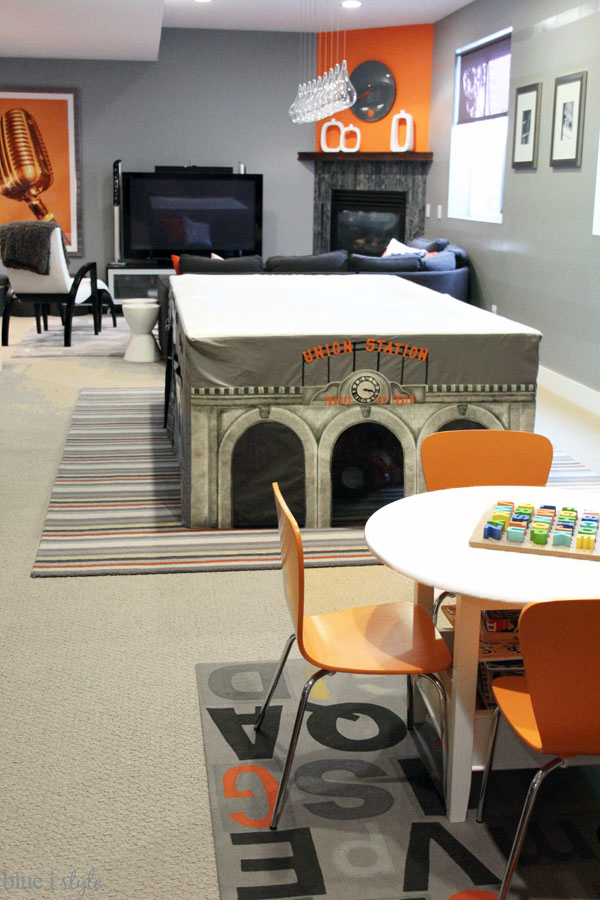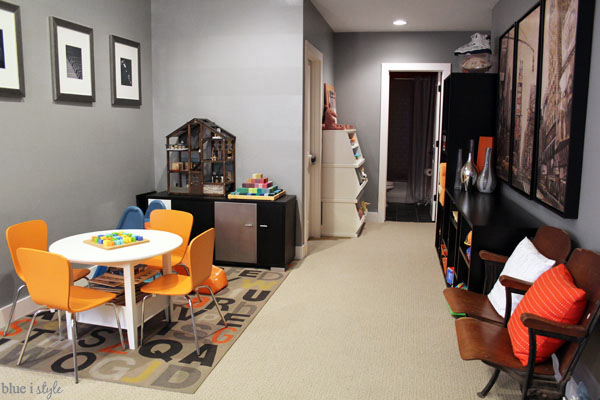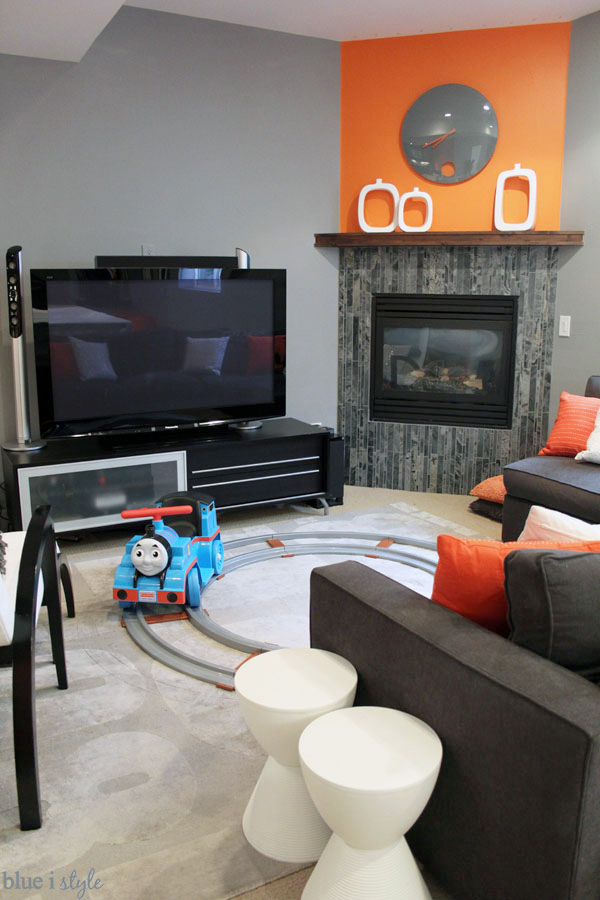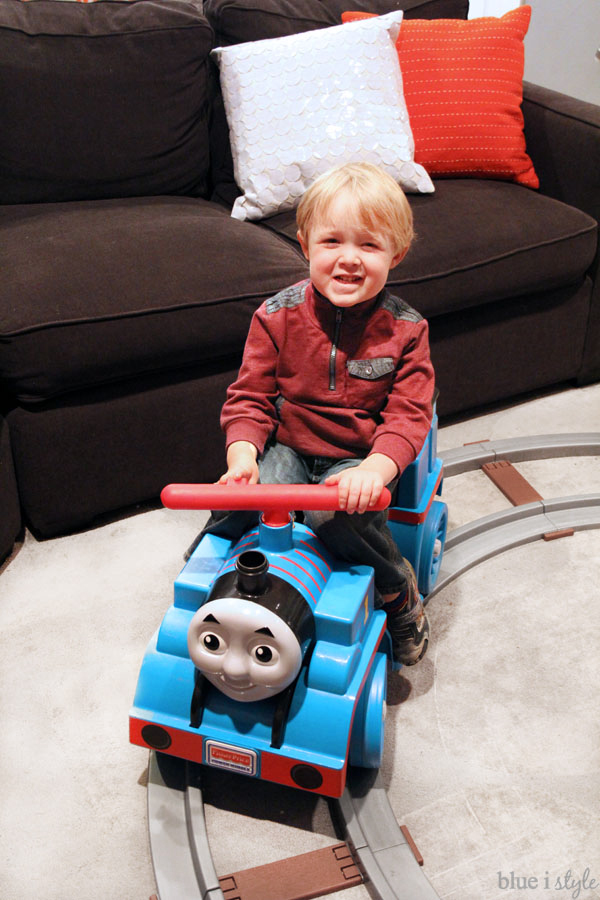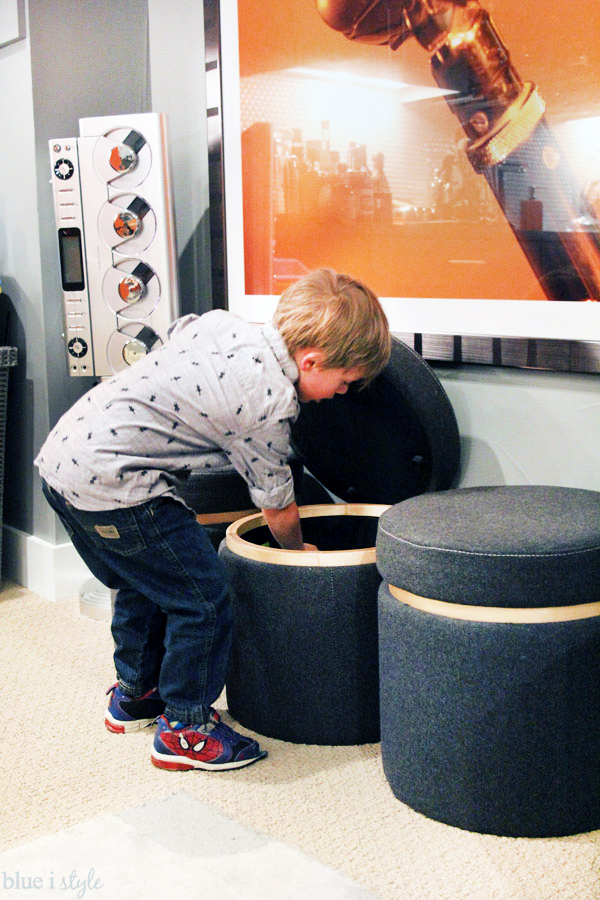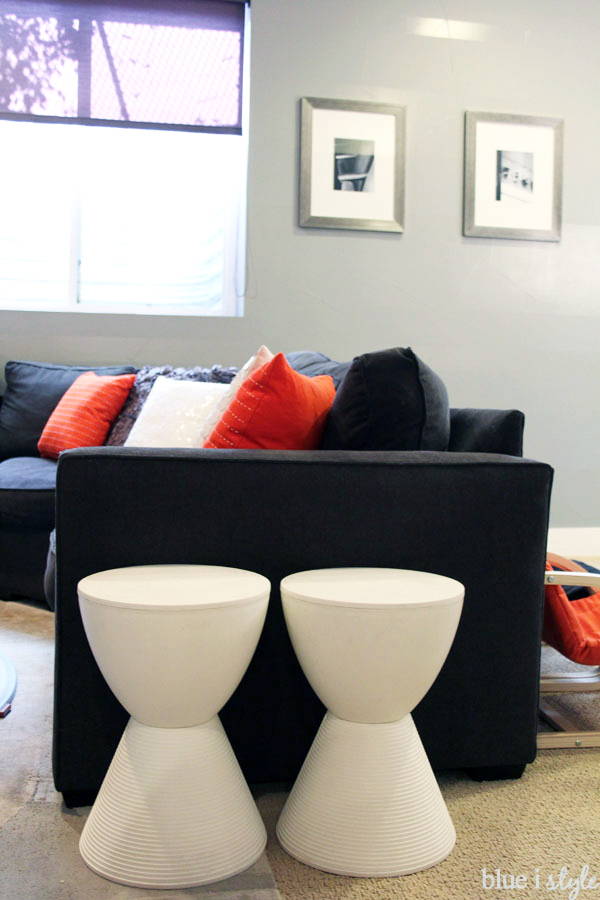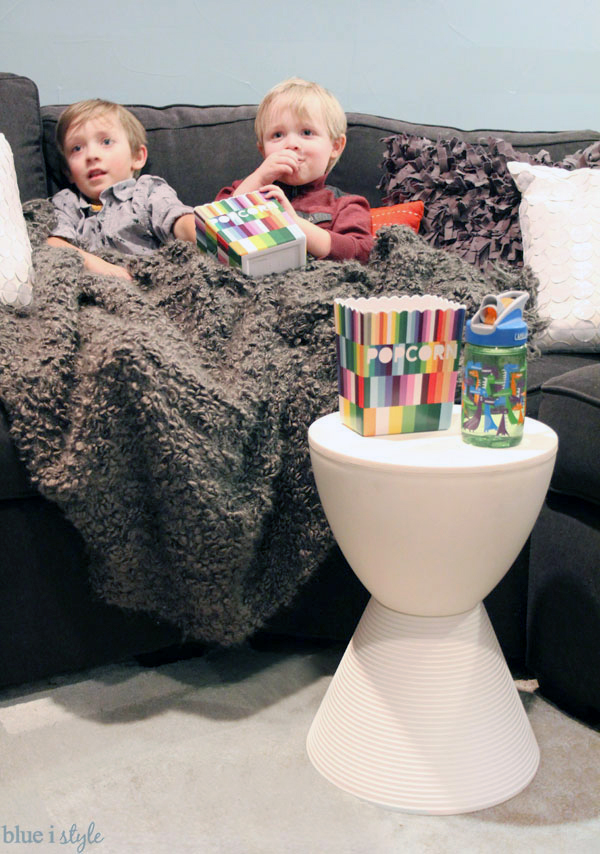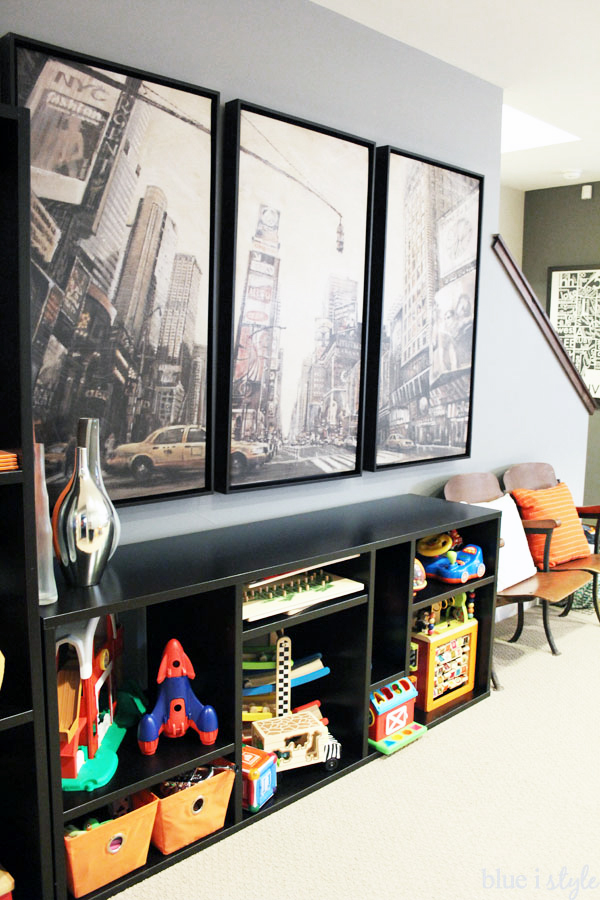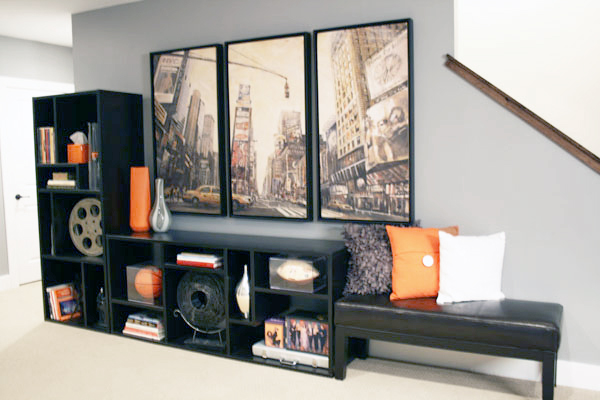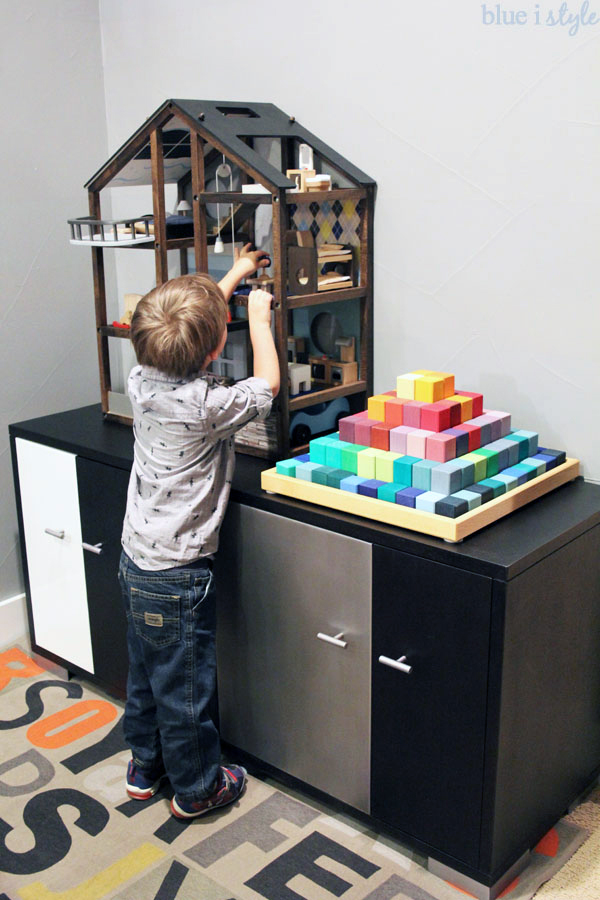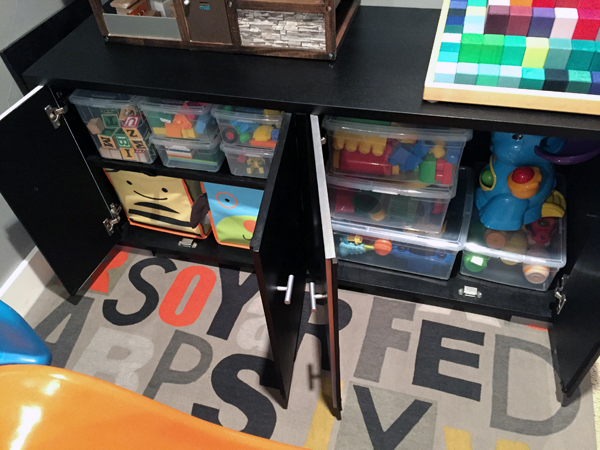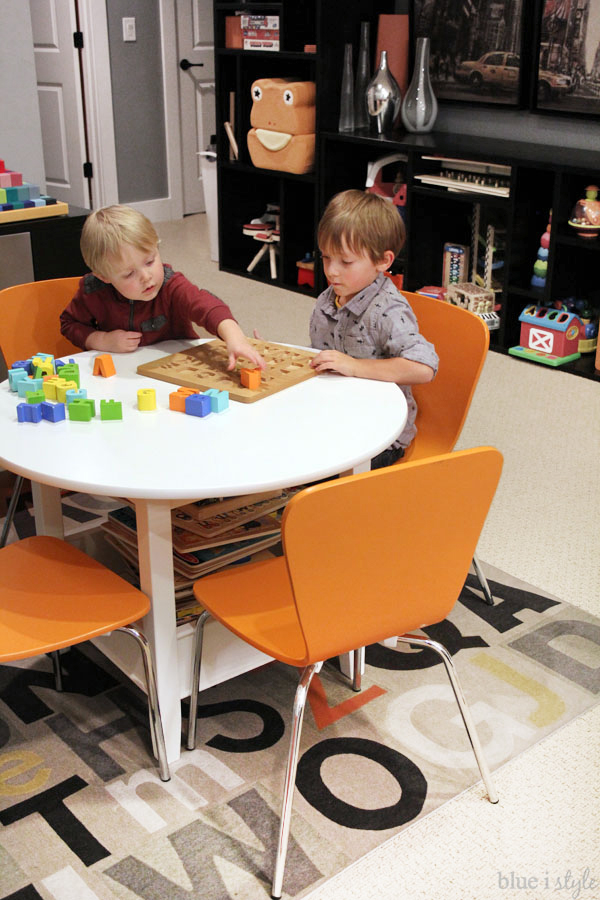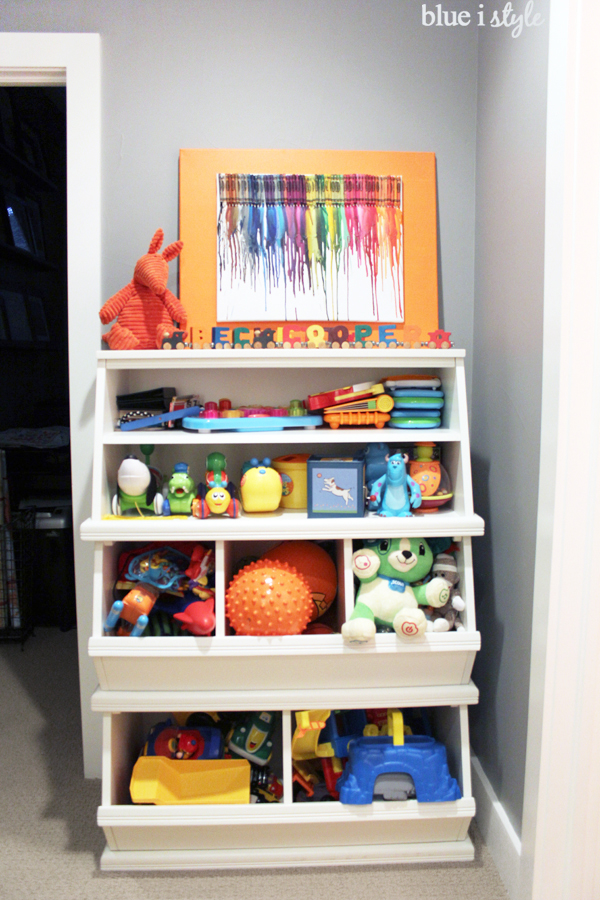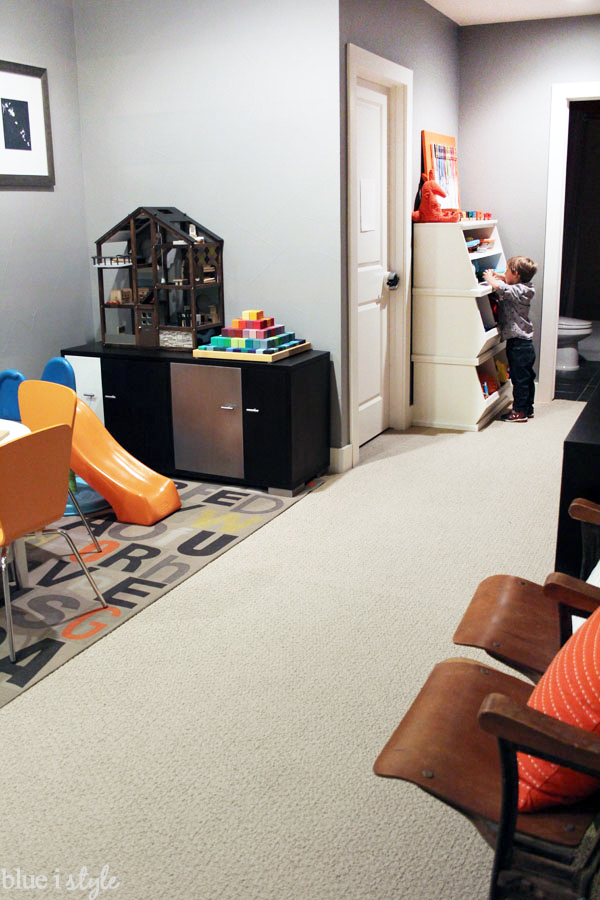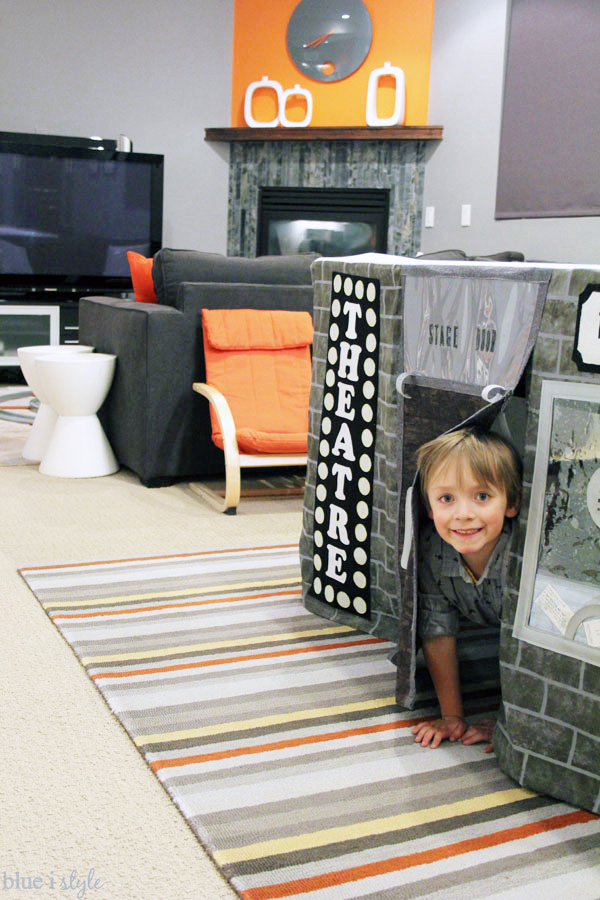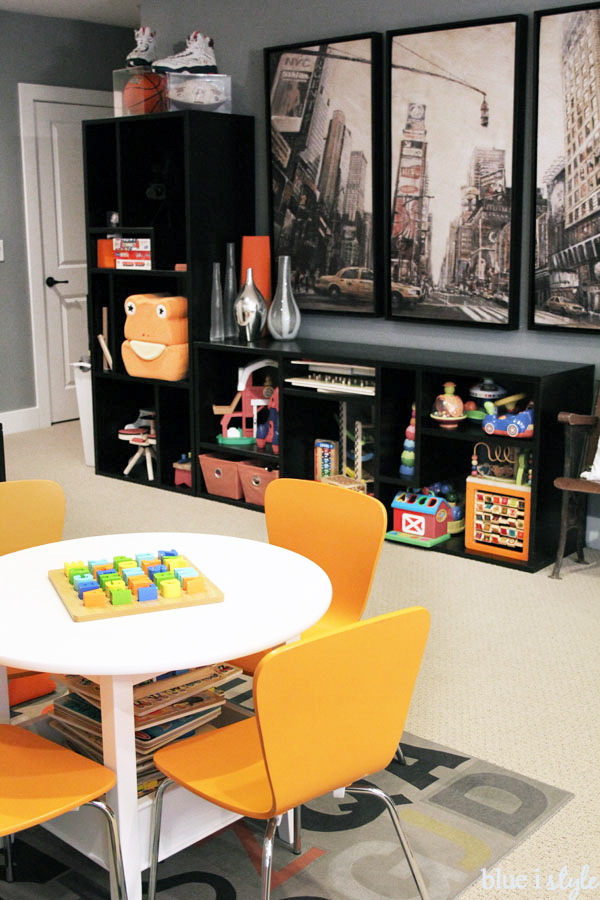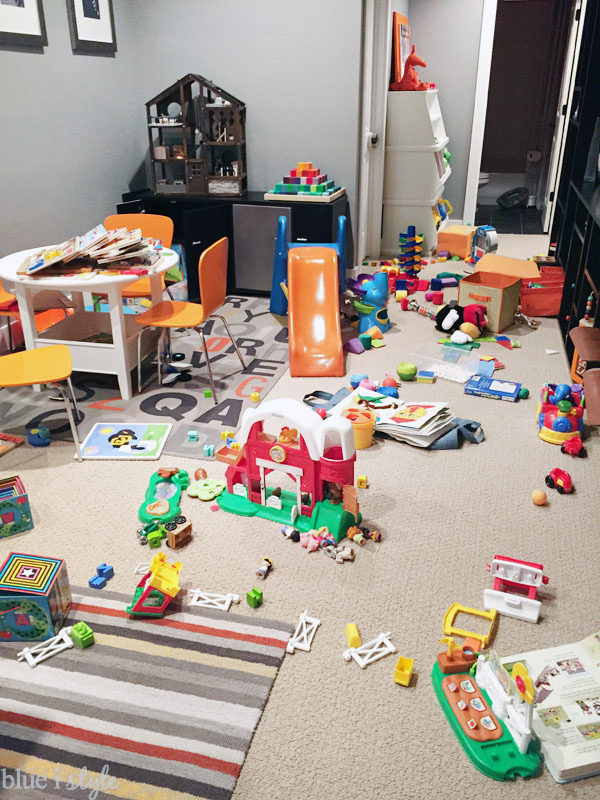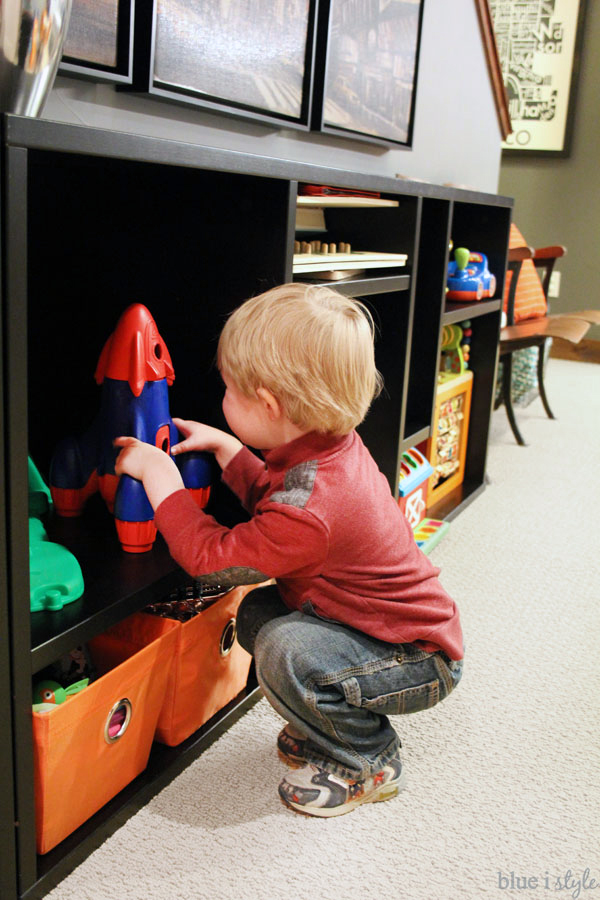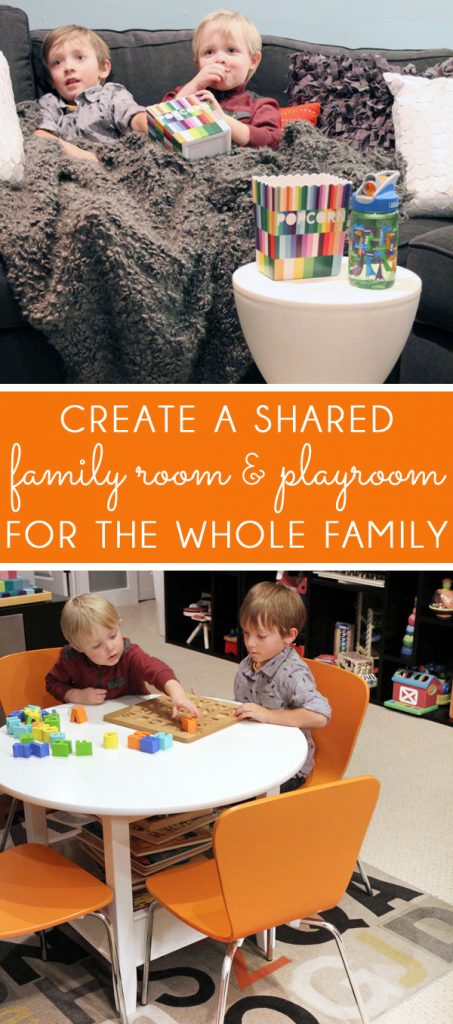And the shelves inside are perfect for storing lots of smaller toys. But best of all, by choosing a sideboard rather than a toy box, we can easily relocate this piece of furniture to another room of our house in the future.
This is not to suggest that you should never chose any kid-specific furniture, or course. In our family room play area, we wanted the kids to have their own table for puzzles, games, and art projects. But even then, we chose a table that would do double duty thanks to it’s large storage compartment on the bottom that corrals a large stack of wood puzzles. And we did our research to choose kid size chairs that are strong enough to hold adults as well so that mom and dad can get in on the play action.
To minimize the visual impact of all of this toy storage, I oriented these toy bins so that only the white side is visible from the majority of the family room.
Despite the business of the colors of the toys on the open shelving, choosing to display a few toys with orange accents helps to make the space feel more grounded and the color palette more defined.
